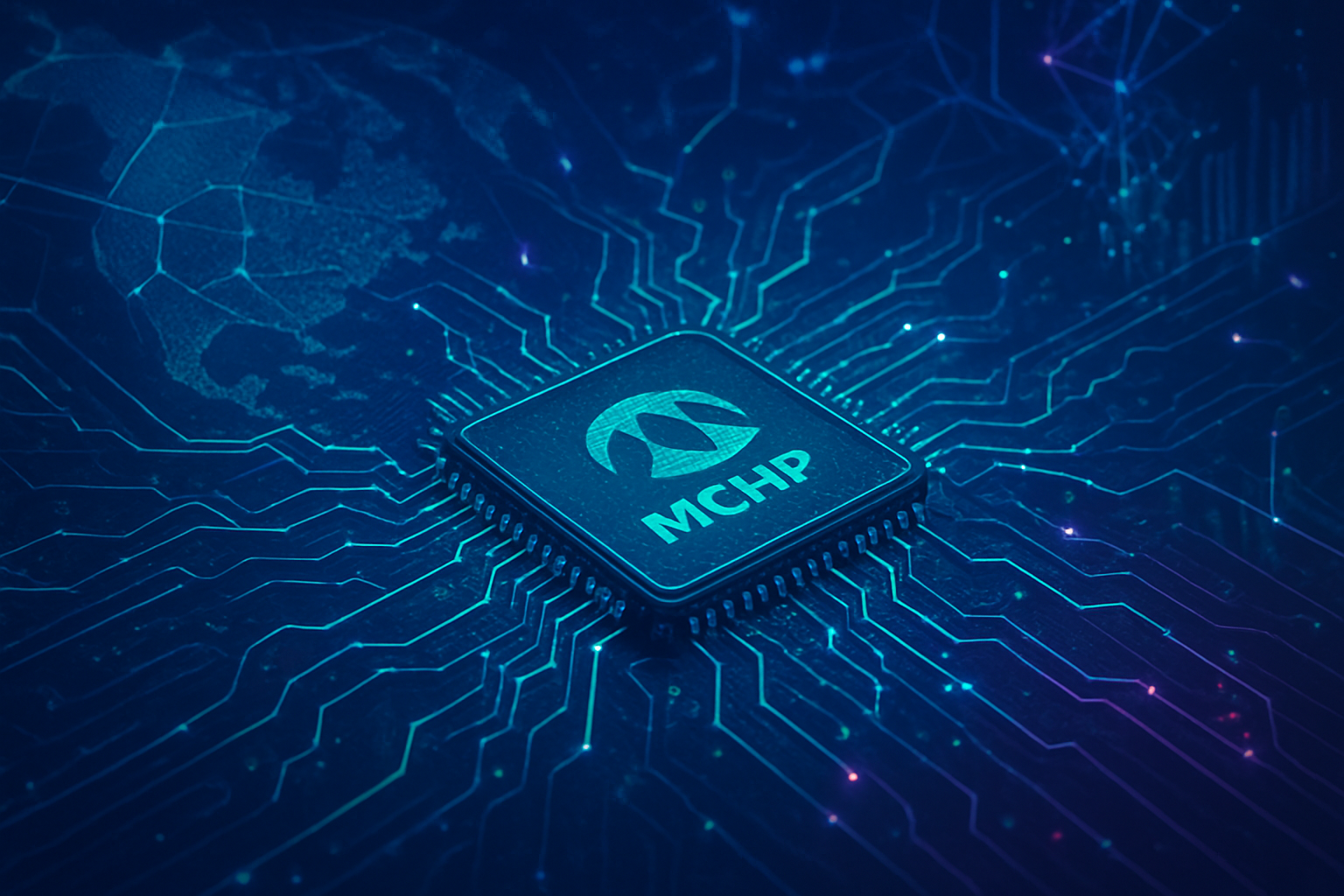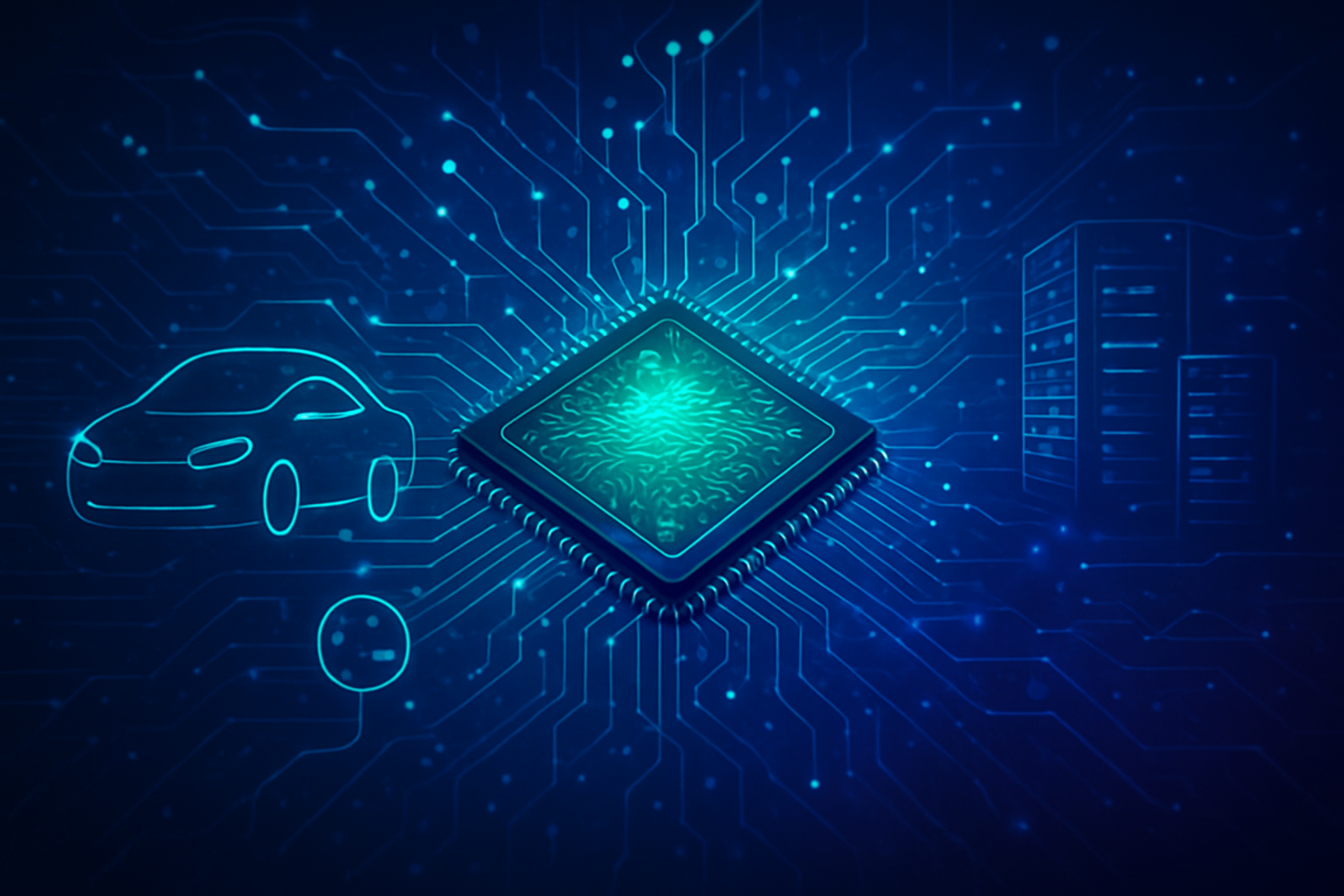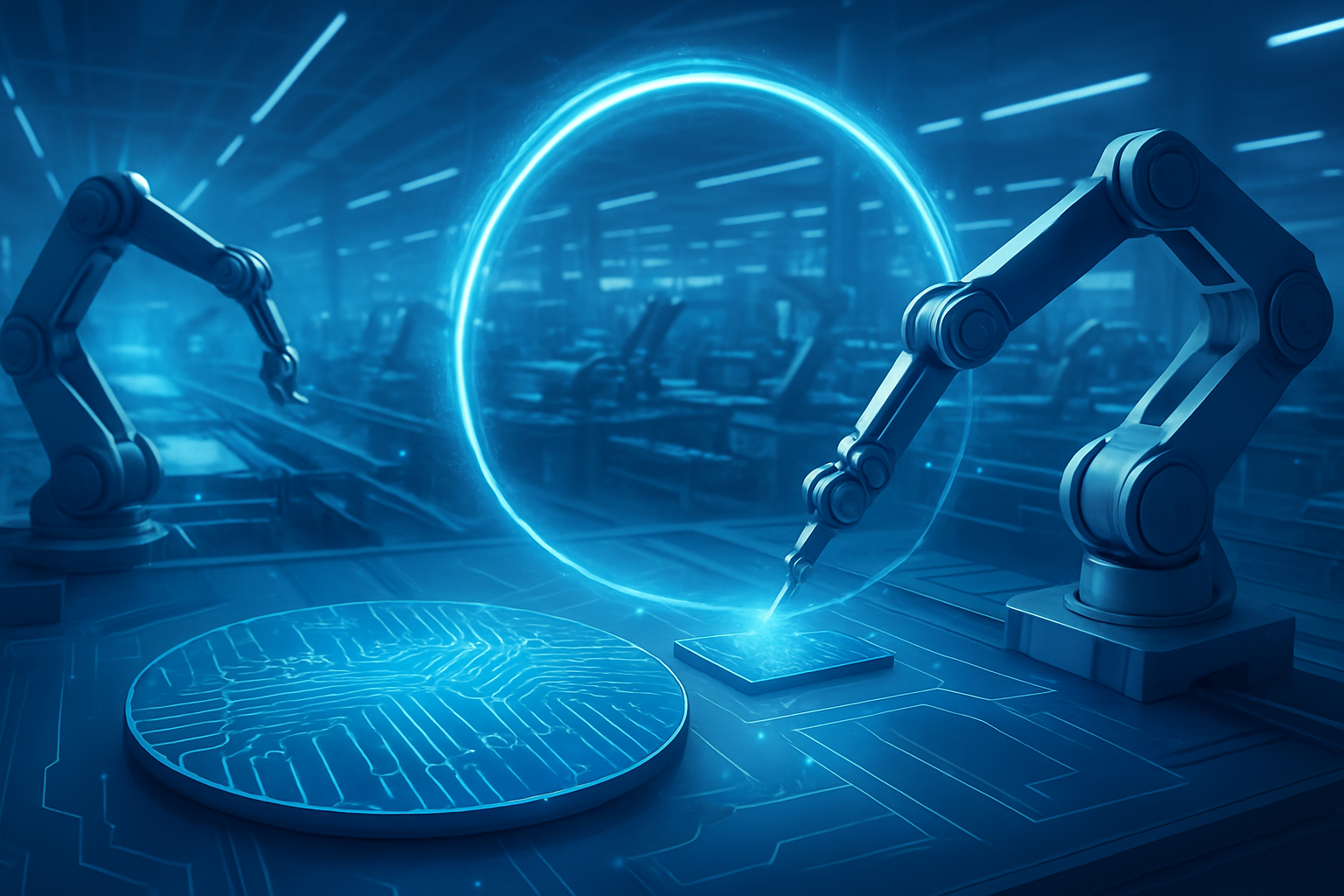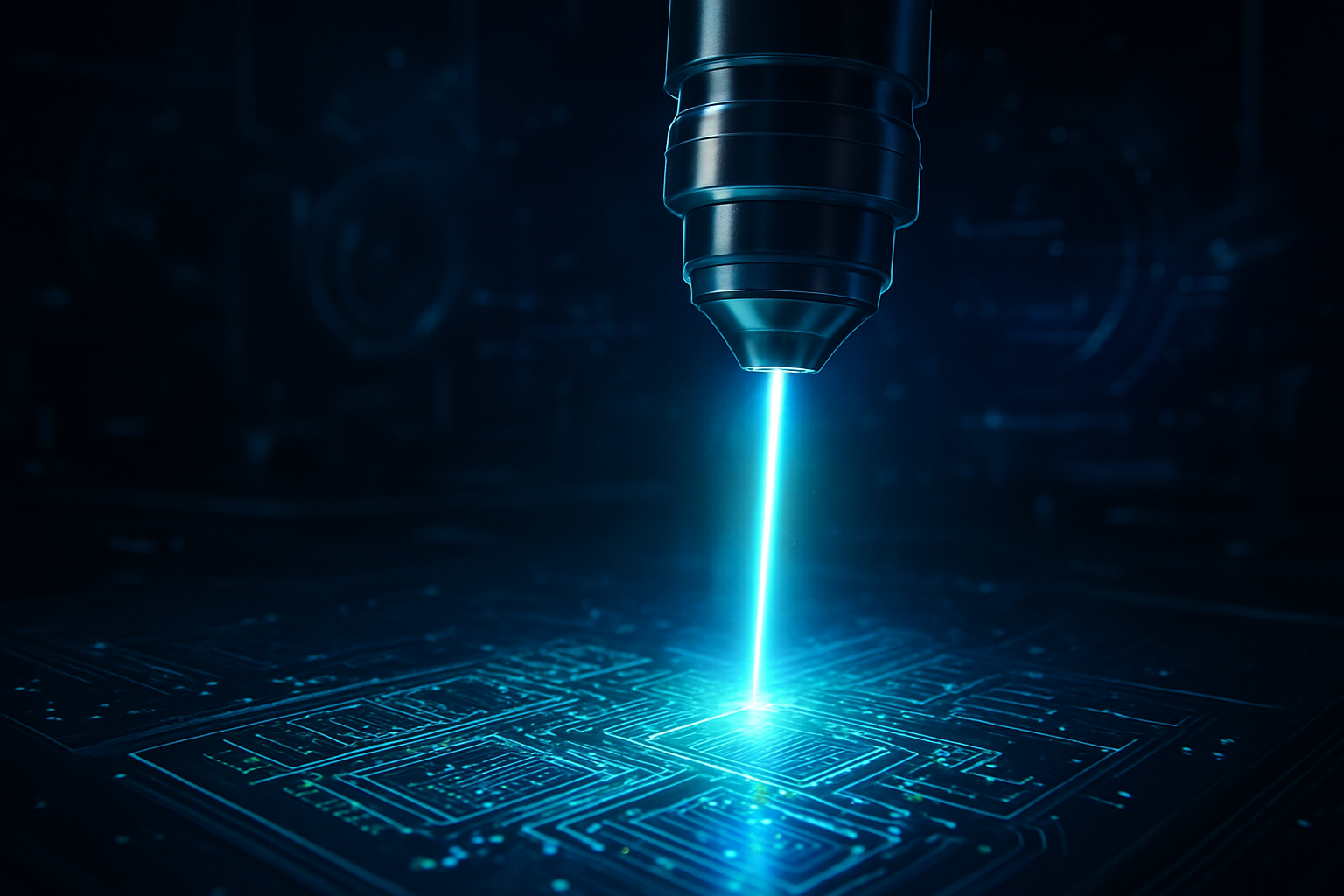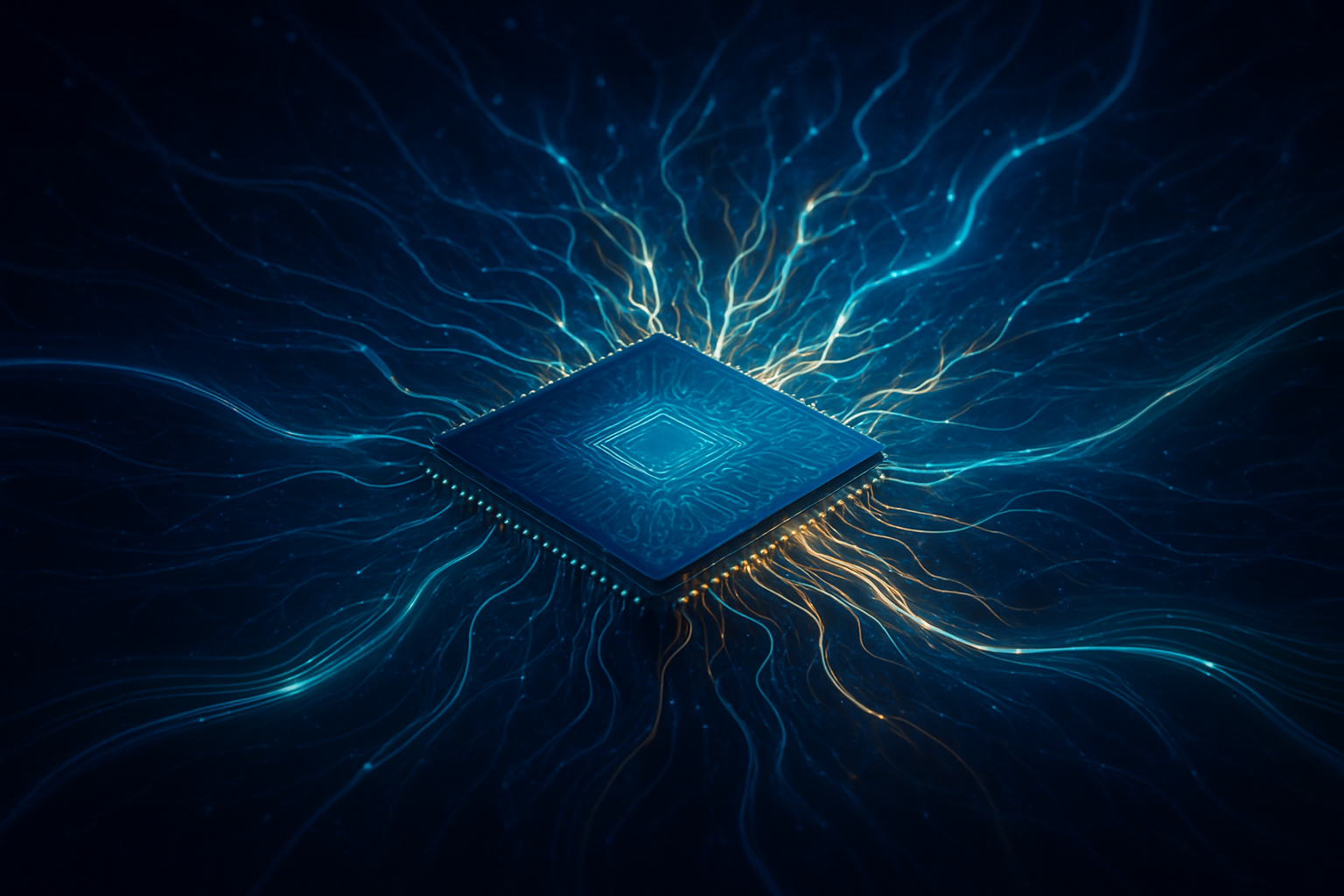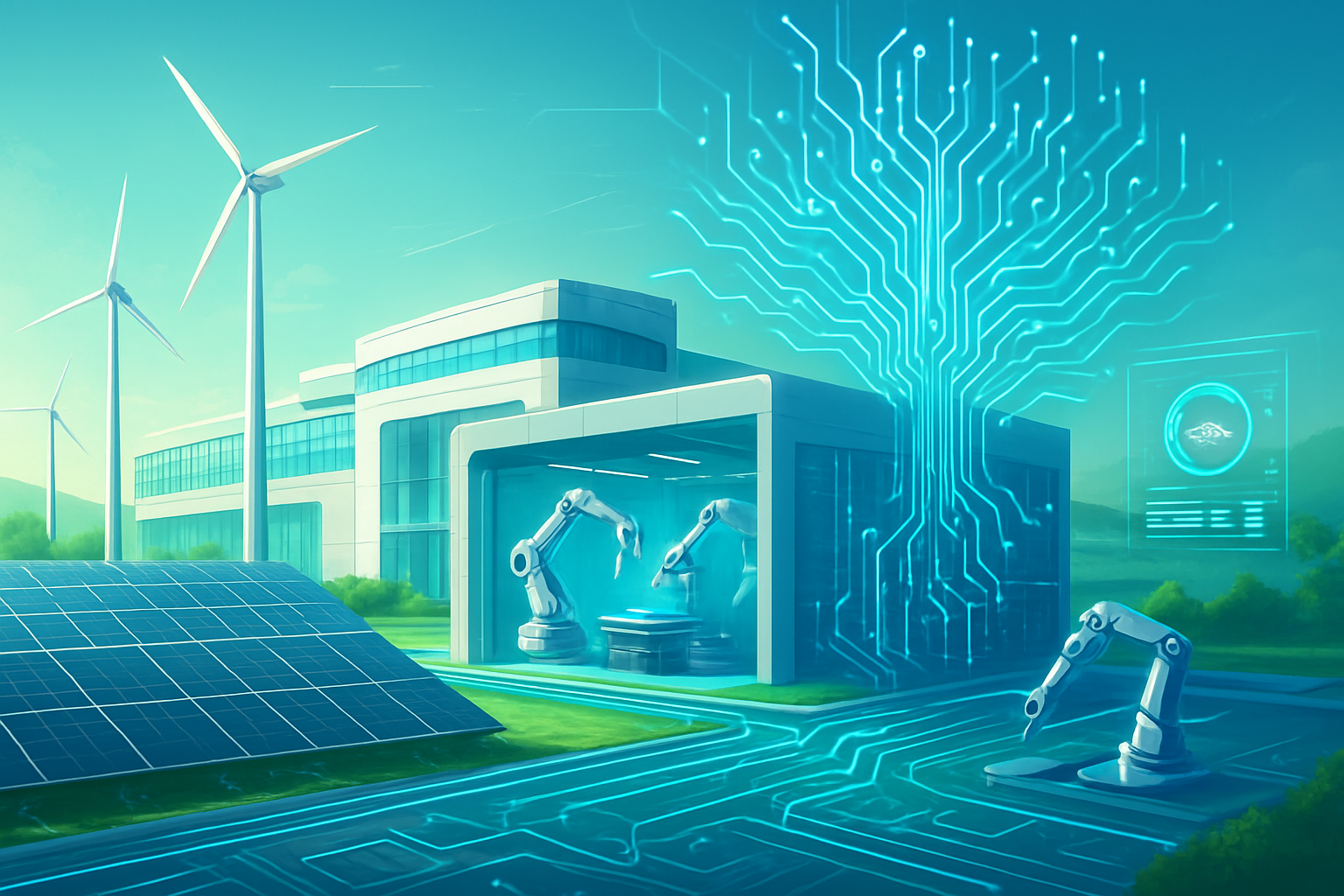The glittering promise of a hyper-connected, AI-driven world hinges on the humble semiconductor, yet its production carries a colossal environmental footprint. From energy-intensive fabrication plants (fabs) guzzling as much power as small cities to vast quantities of ultrapure water and complex chemical waste streams, the industry's rapid growth has sparked an urgent demand for change. Today, however, a quiet revolution is underway. Driven by groundbreaking innovations in everything from circular economy principles to renewable energy integration and green chemistry, the semiconductor industry is actively engineering a more sustainable future—one where the chips powering our progress don't cost the Earth. The immediate significance of these advancements is profound, promising not only a reduced ecological impact but also enhanced supply chain resilience and a vital contribution to a truly green economy.
Paradoxically, the very components enabling our transition to a green economy – semiconductors – have historically been among the most resource-intensive to produce. The manufacturing process for these ubiquitous chips consumes staggering amounts of electricity, often from fossil fuels, and billions of liters of water annually, while also generating hazardous waste and greenhouse gases. However, facing mounting regulatory pressure, increasing stakeholder demand, and the stark realities of climate change, the semiconductor industry is now at a critical inflection point. This article delves into the pioneering innovations that are transforming chip production, making sustainability not just an ethical imperative but an immediate economic and strategic necessity for the digital age.
Engineering a Greener Silicon Future: Technical Advancements and Industry Insights
The semiconductor industry is undergoing a profound transformation, driven by an imperative to minimize its environmental impact. This shift is characterized by a suite of green manufacturing initiatives, the adoption of novel materials, and sophisticated process optimizations that mark a significant departure from previous resource-intensive methods.
Green manufacturing initiatives are at the forefront of this revolution. Leading companies are making aggressive commitments to renewable energy integration, with some targeting 100% renewable energy by 2040 or 2050. For example, Taiwan Semiconductor Manufacturing Company (TSMC) (TWSE: 2330, NYSE: TSM) has committed to transitioning entirely to renewable energy by 2050, already achieving 25% of this target by 2020. Samsung (KRX: 005930) is similarly implementing renewable energy solutions across its global semiconductor plants. This stands in stark contrast to older fabs that heavily relied on fossil fuels. Furthermore, advanced water reclamation and recycling systems are crucial, as chip manufacturing is incredibly water-intensive. TSMC, for instance, repurposed 42.3 million tons of industrial reclaimed water in 2019, covering 67% of its total water consumption. Techniques like reverse osmosis and ultrafiltration are now standard, drastically reducing the industry's freshwater footprint. Efforts also extend to eco-friendly material usage and waste reduction, including the development of new resist chemistries processed with green solvents and comprehensive solvent recovery systems. Intel (NASDAQ: INTC) reclaimed and resold over 8,000 metric tons of solvent in 2021.
The development of new materials is equally vital. Wide-bandgap materials such as Gallium Nitride (GaN) and Silicon Carbide (SiC) are emerging as highly efficient alternatives to silicon, particularly in power electronics. These materials offer superior energy efficiency and thermal conductivity, enabling more robust and energy-efficient components for applications like electric vehicles. Researchers are also exploring novel semiconductor materials like cubic boron arsenide, touted for its exceptional thermal conductivity and carrier mobility, and developing eco-friendly dielectric and resist materials, including lead-free solders and halogen-free flame retardants. Organic semiconductors and perovskite solar cells, utilizing earth-abundant elements, further diversify the sustainable material landscape.
Process optimizations are delivering significant reductions in energy, water, and chemical consumption. Energy-efficient chip design, incorporating techniques like dynamic voltage scaling, reduces power consumption at the device level. While Extreme Ultraviolet (EUV) lithography equipment is energy-intensive, it enables smaller transistors with fewer process steps, leading to long-term efficiency gains. Advanced cooling solutions, such as liquid cooling, are also becoming more prevalent in fabs. Crucially, Artificial Intelligence (AI) and Machine Learning (ML) are pivotal in making manufacturing more sustainable. AI enables precise process control, optimizes resource usage, predicts maintenance needs, and significantly reduces physical experimentation in R&D, with some projects demonstrating over an 80% decrease in emissions. These AI-driven approaches represent a profound shift from less integrated, less optimized traditional manufacturing. The initial reactions from the AI research community and industry experts are overwhelmingly positive, acknowledging AI's pivotal role while also highlighting the "semiconductor paradox" – that AI's growth drives chip demand, necessitating these sustainable practices. Experts view sustainability as a "fourth constraint" alongside power, performance, and price, emphasizing the need for holistic, collaborative efforts across the industry.
Reshaping the Tech Landscape: Impact on Companies and Competitive Dynamics
Sustainable semiconductor manufacturing is rapidly reshaping the tech industry, influencing AI companies, tech giants, and startups by driving innovation, altering competitive landscapes, and creating new market opportunities. This shift is fueled by escalating energy demands, environmental concerns, and increasing regulatory and consumer pressure for eco-friendly practices.
Semiconductor manufacturers are at the forefront of benefiting from this transformation. Companies like TSMC (TWSE: 2330, NYSE: TSM), Samsung (KRX: 005930), Intel (NASDAQ: INTC), GlobalFoundries (NASDAQ: GFS), NXP Semiconductors (NASDAQ: NXPI), and Infineon Technologies AG (ETR: IFX, OTCQX: IFNNY) are directly involved in chip fabrication, a highly resource-intensive process. By investing in sustainable practices such as renewable energy integration, advanced water reclamation systems, eco-friendly materials, and energy-efficient designs, they can significantly reduce operational costs, enhance their brand reputation, and attract ESG-focused investors. GlobalFoundries, for example, has achieved a 98% recycling rate for process water through new wastewater treatment technology.
AI companies, including NVIDIA (NASDAQ: NVDA), Google (NASDAQ: GOOGL), Microsoft (NASDAQ: MSFT), Amazon (NASDAQ: AMZN), and Apple (NASDAQ: AAPL), also stand to gain. While AI's growth drives substantial energy consumption in data centers, these companies benefit from the availability of more energy-efficient chips produced sustainably. Many tech giants, as major customers for semiconductors, have committed to net-zero emissions across their entire value chains, thus pushing their suppliers towards greener manufacturing. Furthermore, startups focused on green technology and materials science are finding fertile ground, developing new process designs, sustainable materials, emissions control, and recycling technologies. Providers of AI and Machine Learning solutions for manufacturing optimization will also see increased demand as chipmakers seek to leverage these tools for efficiency and sustainability.
This push for sustainability is becoming a crucial differentiator, enhancing brand value, attracting investment, and leading to significant cost savings through optimized resource usage. Companies that proactively integrate sustainability gain a competitive advantage, better navigating regulatory compliance and building supply chain resilience. However, this also brings potential disruptions. Non-sustainable practices may become economically unfeasible or face regulatory restrictions, requiring substantial investment in new equipment. There will be a heightened demand for chips designed with energy efficiency at their core, potentially disrupting the market for less efficient components. The shift to a circular economy model will also disrupt traditional product lifecycles, creating new services around material recovery and refurbishment. Strategically, companies can leverage sustainable manufacturing to position themselves as leaders in green tech, creating "sustainable by design" products and fostering strategic partnerships across the value chain. Utilizing AI for "data mastery" to track and optimize sustainability metrics further reinforces this advantage.
The Broader Canvas: AI, Environment, and Society
The wider significance of sustainable semiconductor manufacturing is rapidly growing, driven by both environmental imperatives and the escalating demands of advanced technologies, particularly Artificial Intelligence (AI). This shift is crucial for the industry's long-term viability, its integration into the broader AI landscape, and its overall global impact.
Semiconductor manufacturing, an inherently resource-intensive process, consumes vast amounts of energy, water, and chemicals, generating significant greenhouse gas (GHG) emissions and electronic waste. As demand for electronic devices and advanced chips continues to surge, the environmental footprint of this industry becomes an increasingly critical concern. Sustainable semiconductor manufacturing aims to mitigate these impacts by prioritizing energy efficiency, waste reduction, and the adoption of environmentally friendly materials and processes across the entire lifecycle. This is not merely an environmental concern but also an economic necessity, driving operational cost reductions, enhancing brand reputation, and ensuring compliance with evolving regulations and customer demands for greener supply chains.
The relationship between sustainable semiconductor manufacturing and the AI landscape is symbiotic and increasingly critical. AI, especially advanced applications requiring significant computational power, is fundamentally dependent on semiconductors. Specialized chips like Graphics Processing Units (GPUs) and Neural Processing Units (NPUs) are the backbone of AI processing, demanding ever-increasing speed and energy efficiency. The rapid expansion of AI and generative AI is fueling an unprecedented surge in demand for these high-performance chips, which, paradoxically, exacerbates the environmental challenges of chip production. However, AI itself is emerging as a powerful tool to make semiconductor manufacturing more sustainable. AI and machine learning algorithms can optimize energy consumption in fabs, enhance resource efficiency, enable predictive maintenance, improve yield, and even optimize chip designs for energy consumption. This creates a symbiotic relationship where AI not only benefits from efficient semiconductors but also contributes to their greener development and deployment, leading to the concept of "sustainable AI."
The overall impacts are multifaceted. Environmentally, it directly addresses high energy consumption, massive water usage, chemical waste, and greenhouse gas emissions. Economically, it leads to significant operational cost savings and enhances long-term competitiveness. Socially, it ensures the industry's continued acceptance and addresses ethical concerns related to raw material sourcing. However, significant concerns remain, including high initial investment costs, technological hurdles in developing new materials and processes, the immense complexity of the global supply chain, and regulatory disparities across regions. Balancing the immense growth in demand for semiconductors, particularly for AI, with stringent environmental standards is a constant tension. While not a singular "AI breakthrough" itself, sustainable semiconductor manufacturing represents a crucial and evolving paradigm shift that is as vital to the future, widespread, and responsible development of AI as any past algorithmic or architectural advancement. It transforms the underlying hardware infrastructure to be economically viable and environmentally responsible for an AI-powered future.
The Road Ahead: Future Developments and Expert Outlook
The semiconductor industry is poised for a future defined by intensified efforts towards sustainability, driven by both environmental imperatives and the relentless demand for advanced computing, particularly for AI. This path involves a blend of near-term tactical improvements and long-term transformative innovations.
In the near term (next 1-5 years), the industry will see accelerated integration of renewable energy sources, with major players like TSMC (TWSE: 2330, NYSE: TSM) and Intel (NASDAQ: INTC) pushing towards significant renewable energy targets. Water conservation will remain a critical focus, with advanced reclamation and recycling systems becoming more prevalent, exemplified by GlobalFoundries (NASDAQ: GFS) achieving a 98% recycling rate at some facilities. The adoption of AI and Machine Learning to optimize manufacturing processes for efficiency, predictive maintenance, and waste reduction will become more sophisticated. There will also be a greater emphasis on "green chemistry" and the exploration of eco-friendly materials, including renewable and plant-based polymers. Stricter regulations, particularly from regions like the European Union, are expected to further incentivize innovation in water usage and recycling.
Looking further ahead (beyond 5 years), the industry anticipates more transformative changes. Widespread adoption of smart manufacturing, leveraging end-to-end digitalization, will continuously optimize design and production for reduced carbon footprints. Research into novel materials and alternative chemicals to replace hazardous substances will intensify. The development of more energy-efficient chip architectures, such as low-power transistors and advanced packaging technologies like 3D stacking, will become standard to significantly reduce device energy consumption throughout their lifespan. Lower temperature processing and the elimination of superfluous manufacturing steps are long-term goals. Experts even predict that nuclear-powered systems could become a long-term solution for the immense energy demands of fabrication plants.
While sustainable semiconductor manufacturing primarily addresses the environmental impact of chip production, the chips created through these greener methods will be crucial for a wide array of existing and emerging technologies. Sustainably manufactured chips will power clean energy technologies, electric vehicles (EVs), and critically, the burgeoning AI and Machine Learning infrastructure. They will also be fundamental to smart devices, IoT, industrial automation, and robotics, enabling these sectors to reduce their own carbon footprints. However, significant challenges remain, including the inherently high energy and water consumption of fabs, the reliance on hazardous chemicals, the complexity of global supply chains, and the high initial investment costs for green technologies. Balancing the continuous demand for higher performance and smaller chip sizes with environmental responsibility will be an ongoing tightrope walk.
Experts predict a complex but determined push towards sustainability. Despite ongoing efforts, carbon emissions from semiconductor manufacturing are projected to continue rising in the short term, driven by increasing demand for advanced technologies like AI and 5G. However, by 2025, at least three of the top 25 semiconductor companies are expected to announce even more ambitious net-zero targets. The industry will intensely focus on enhancing energy efficiency across information and communication technologies (ICT) and improving environmental sustainability throughout the entire lifecycle of microelectronics. Smart manufacturing, powered by AI, is deemed critical for achieving these changes. Supply chain decarbonization will intensify, with companies implementing green procurement policies. Watch for continued investment in renewable energy, breakthroughs in green chemistry and PFAS alternatives, and the real-time application of AI for process optimization in fabs. Also, observe the progress of policy implementation, such as the U.S. CHIPS Act, and efforts towards global harmonization of environmental regulations. The journey is complex, but the momentum suggests a pivotal shift that will define the industry for decades to come, ensuring that the foundational technology for our digital future is built responsibly.
A Sustainable Foundation for the Digital Age: A Comprehensive Wrap-up
The semiconductor industry, a foundational pillar of modern technology, is at a critical juncture where rapid innovation must align with urgent environmental responsibility. A comprehensive look at sustainable semiconductor manufacturing reveals significant challenges and promising solutions, with profound implications for the future of Artificial Intelligence and the planet.
The drive for sustainable semiconductor manufacturing is a direct response to the industry's substantial environmental footprint. Traditional manufacturing is highly resource-intensive, consuming vast amounts of energy and water, and relying on hazardous chemicals and process gases with high global warming potential (GWP). This results in considerable greenhouse gas emissions and waste generation, exacerbated by the production of advanced nodes. However, there's a clear industry-wide commitment, with major companies like Intel (NASDAQ: INTC), Samsung (KRX: 005930), NVIDIA (NASDAQ: NVDA), TSMC (TWSE: 2330, NYSE: TSM), and GlobalFoundries (NASDAQ: GFS) setting ambitious net-zero and renewable energy targets. Technological innovations are driving this "green revolution," including widespread renewable energy integration, advanced water reclamation and recycling systems, green chemistry, sustainable materials, and energy-efficient design and manufacturing processes.
The trajectory of sustainable semiconductor manufacturing holds significant importance for the history and future of Artificial Intelligence. While AI is a powerful tool for driving innovation, the chips that power it are inherently more energy-intensive to produce, particularly advanced AI accelerators, which contribute significantly to the industry's carbon footprint. This creates a critical need for sustainable practices to mitigate the environmental cost of AI's growth. Crucially, AI and Machine Learning are becoming indispensable tools for achieving sustainability in semiconductor manufacturing itself. AI algorithms optimize energy consumption in fabs, enhance supply chain visibility, predict equipment failures, optimize logistics, and improve yield rates. By enabling precise control and resource optimization, AI helps create "greener chips" and more sustainable growth for AI, ultimately serving as a foundational enabler for its long-term viability and societal acceptance.
The long-term impact of sustainable semiconductor manufacturing is poised to redefine the technology industry's relationship with the environment. This shift is moving beyond mere compliance to a fundamental transformation towards a greener and more resilient tech future. Sustainability is increasingly becoming an economic imperative, offering operational cost reductions and competitive advantages by attracting environmentally conscious investors, customers, and talent. The industry's actions have broader implications for global climate change mitigation, directly contributing to international efforts to meet ambitious targets. The long-term vision involves a fully circular economy for semiconductors, drastically reducing resource depletion and waste.
In the coming weeks and months, expect more aggressive net-zero target announcements from top semiconductor companies, driven by regulatory pressure and investor demands. Watch for progress and widespread adoption of standardized environmental metrics, such as the Life Cycle Assessment (LCA) framework being developed by the International Electronics Manufacturing Initiative (iNEMI). Continued heavy investment in renewable energy infrastructure and breakthroughs in green chemistry, particularly for PFAS alternatives, will be key indicators of progress. The real-time application of AI for process optimization in fabs will expand significantly, becoming more integrated into daily operations. Finally, monitor the impact of legislation like the U.S. CHIPS Act and EU Chips Act, as well as efforts towards global harmonization of environmental regulations, which will shape the industry's sustainable future. The journey towards fully sustainable semiconductor manufacturing is complex, but the momentum indicates a pivotal shift that will define the industry for decades to come, ensuring that the foundational technology for our digital future is built responsibly.
This content is intended for informational purposes only and represents analysis of current AI developments.
TokenRing AI delivers enterprise-grade solutions for multi-agent AI workflow orchestration, AI-powered development tools, and seamless remote collaboration platforms.
For more information, visit https://www.tokenring.ai/.
